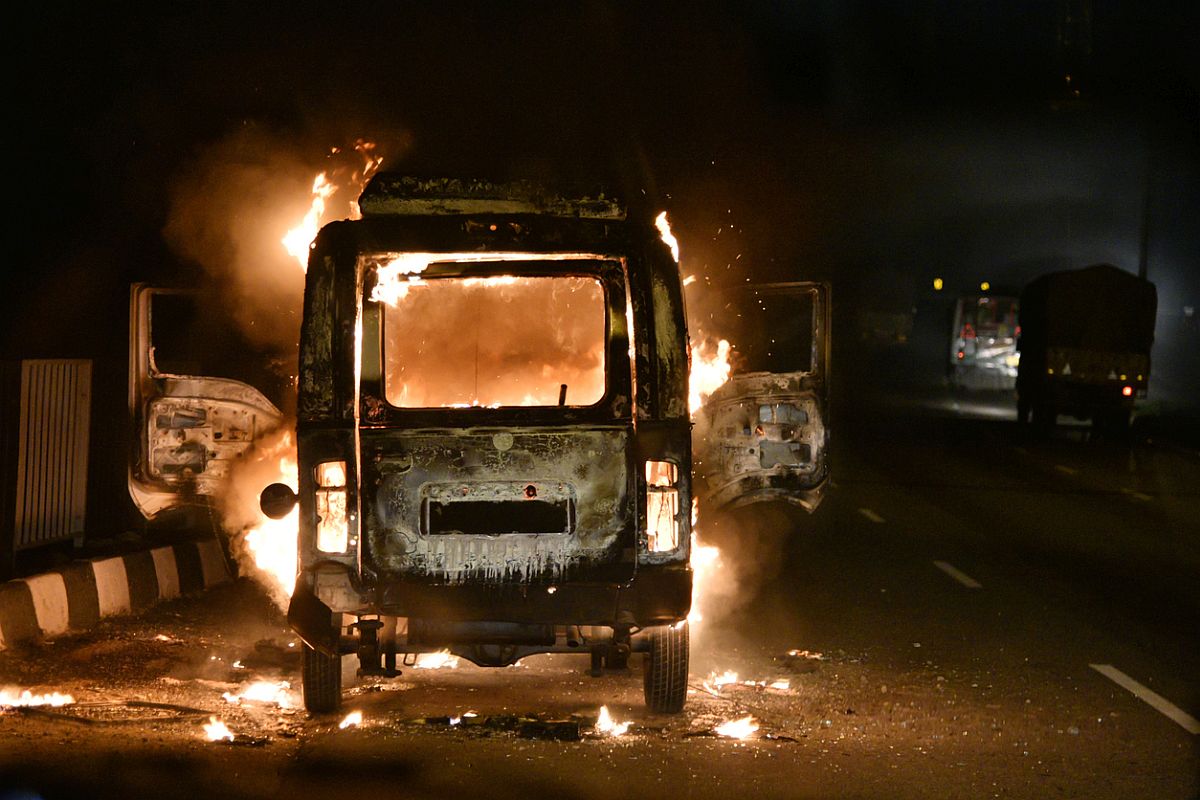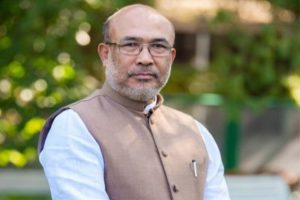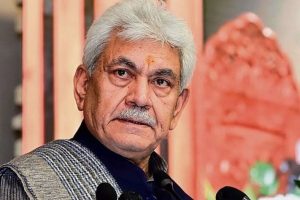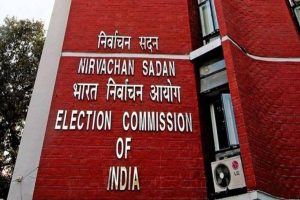Chassad village in Manipur was in the news for more than a week for the arson committed by its neighbouring villages last month. Located at the district headquarters of the newly formed Kamjong district in the North-eastern hills of Manipur, Chassad has more than 200 years of written history.
The chief of the village is the eldest of the Haokip clan, among the Kukis, and is the “perennial source of custom and tradition” however widespread and scattered the settlement of the younger sub-clans may be. The house of the Chassad-pa has a long history of dominion with its “tributary off-shoots” and diplomacy with neighbours, including its involvement in the perpetual territorial conflicts between the Manipuri Kingdom and the Raja of Sumjok in Burma, and a subtle relationship with the British.
Chassad: A historic village
One of the first reports in the “History of the Relations of the Government with the Hill Tribes of the North-East Frontier of Bengal”, by Alexander Mackenzie, which was later expanded and published in 1884, has sections on “account of the Chasad Kukis”. During the 19th century when Colonel McCulloh, then Political Agent of Manipur, was in “direct political charge of most of the Kukis of Manipur”, he invited the Chassad chief on a certain occasion and “under safe conduct”. He was, however, murdered by a Manipuri official, then brother-in-law of the Manipur Maharaja. This “foul act of treachery”, Colonel Johnstone gave an account, “had made them, at heart, deadly enemies of Manipur”. It was, to a large extent, responsible for the alliance of Chassad with the Rajah of Sumjok, a tributary chief of Burma, and many fateful events that unfolded in, what Mackenzie called, “uninhabited” country or “unoccupied tract” to the north of the Kubo valley in today’s Myanmar, particularly on Manipuri subjects.
The mathematical line drawn by Pemberton, which divided Burma and Manipur, created “doubtfulness and… had led to several outrages” and instability in this part of the tract. During World War I, Labour Corps were recruited for France in British colonies of Asia. The Manipur Maharaja was committed to supplying 2,000 men, among whom half would consist of recruits from the hill areas, though the Maharaja had no direct control over hill subjects. This labour recruitment, locally known as pothang, was opposed by the Kukis. The Kukis neither agreed to supply labour corps for France nor surrendered guns. The Chassad-pa, or chief of Chassad, took a leading part in this opposition and called a meeting involving those in the territories to the North-east of Manipur and the unadministered area called Somra tract.
It was “about the end of November or beginning of December” that Pache, chief of the Chassad, summoned a big meeting of the Kuki chiefs at Chassad. During the meeting, about 150 chiefs “resolved not to obey any orders or summons from the Government and to fight if the Government tried to enforce orders”. Thus, the resistance was turned into a full-blown conflict after the Chassad meeting. The Anglo-Kuki war also ended with the surrender of Pache in March 1919.
Current conflict
The land conflict between Chassad and Sampui village goes back to the colonial period. In 1944, Rithale, the chief or khullakpa of Sampui, filed a case against Tongkhothang, the chief of Chassad, in the Court of the SubDivisional Officer, Ukhrul. The “order” issued by then Sub-Divisional Officer of Ukhrul, RL Shaw on 6 July 1945 regards civil case number 36 of 1944- 45 states that, “I cannot recognise Sampui’s claim to the land which had previously been recognised as Chassad land. The defendant has the right to enjoy any loushal for cultivation done on his land by other villagers and plaintiff has no right to any loushal. Plaintiff’s right to the land extends to being able to cultivate without payment of loushal to Chassad”.
Despite such clarification from the colonial administration after careful examination of the case, it did not stop Sampui from exerting claims to the Chassad land. In February this year when Chassad cleared a portion of hill range for jhum cultivation, it was opposed by Sampui village claiming that the land belongs to them. Before the trees that were felled dried, it was prematurely burnt by unknown miscreants on 15 March, rendering the jhum field unfit for cultivation. Chassad blamed Sampui villagers and blocked the main road of the district the next morning in protest against such an act of arson and demanded the culprits to be nabbed. The blockade stranded many in Kamjong and adjoining villages, who were en route to Imphal and other places.
The altercation during the blockage resulted in physical assaults. The neighbouring villages, mainly from the Tangkhul community, overpowered the blockade enforcers and that eventually lead to the burning of over a hundred Chassad houses.
Bandhs in Manipur
In Manipur, a blockade or bandh has been a common feature for long. Bandhs were normally called to protest against and demand justice from the state government. In 2011, when a bandh was enforced for months in the Sadar Hills area of the state to demand a full-fledged district status, a counter-bandh was launched by the United Naga Council. The valley area of the state is not an exception to this so-called bandh culture. Lightning bandhs or quick enforcement of blockades were frequently launched or threatened to be launched to press the state government into fulfilling certain demands.
At the peak of the United Naga Council bandh in 2010 against the Autonomous District Council election, a professor from Senapati district of Manipur at the North-Eastern Hill University, Xavier P Mao, defended such bandhs in a democratic country like India, and said that unless people resorted to violent agitations, their grievances were not considered. He argued that a bandh had become one of the means of the weaker sections of society to address their problems against the dominant section and draw attention of the authorities concerned. In a blockade-filled society like Manipur, therefore, the inconvenience caused by the one at Chassad cannot provide enough justification for such acts of arson and the damage inflicted on a huge number of houses and properties.
Peace without justice
In the aftermath of the Chassad arson, a peace committee was formed to work and formulate a plan for peaceful coexistence. Several rounds of talks were held to restore normalcy and trust between the two communities. However, in the process of restoration of peace and normalcy, there is no talk about the criminal justice to be put in place. The burning of jhum fields and arson of Chassad houses is a crime committed by miscreants. Crime is a social phenomenon and the perpetrators need correction under the established procedure of law. Several videos and pictures that emerged of the Chassad arson clearly show the identity of those involved.
Despite such evidence, legal actions have not been taken. The destruction of the livelihood and home of anyone is against United Nations treaties and conventions. Article 25 of the Universal Declaration of Human Rights, and Article 11 of the International Covenant on Economic, Social and Cultural Rights clearly point to these, and India is a signatory to both treaties. The acts of the Chassad arsonists seem to have been treated as misdemeanor and glossed over. The cry for justice is dismissively ignored. However, one thing is clear. A crime that is unpunished, can be repeated and injustice will spread. The ball is in the court of the state government. It has to choose between enforcement of the “law” or ignore the criminal acts and perpetuate lawlessness.
(The writer is assistant professor, Centre for the Study of Law and Governance, Jawaharlal Nehru University, New Delhi)











